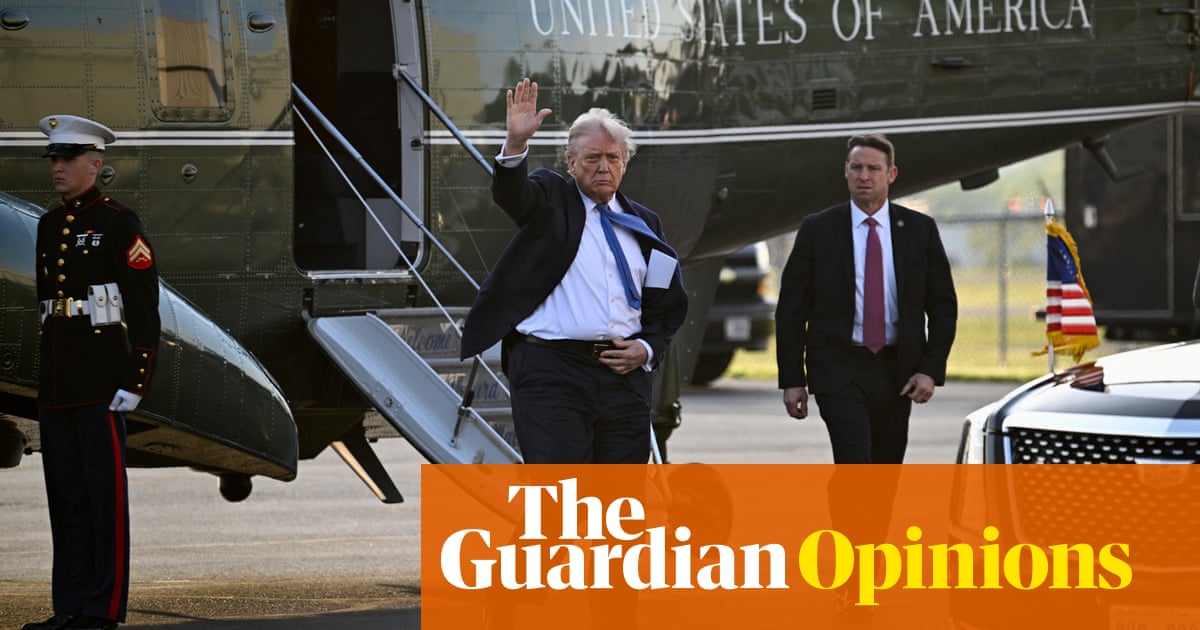Tyrants come to a sticky end, or so history suggests. Richard III and Coriolanus made bloody exits. More recently, Saddam Hussein went to the gallows, Slobodan Milosevic went to jail, Bashar al-Assad went into exile. Libya’s Muammar Gaddafi was run to ground in a sewer. Tyranny, from the Greektúrannos(“absolute ruler”), is typically fuelled byhubrisand leads ineluctably tonemesis. Tyrants are for toppling. Their downfall is a saving grace.
Tyranny, in its many forms, is back in vogue, and everyone knows who’s to blame. To be fair, to suggest similarities between the aforementioned abominable individuals and Donald Trump would be utterly wrong. In key respects, he’s worse. Measured by willingness and capacity toharm the world’s poorestand most vulnerable, wreak global economic mayhem and threaten nuclear annihilation, Trump is uniquely dangerous – and ever more so by the day.
In any notional league of tyranny, Trump tops the table, with Russia’s Vladimir Putin following closely in his rear. If these two narcissists formed a partnership (a scary but not wholly improbable thought), it could be called Monsters R US. Across a disordered globe, wannabe “strongmen” queue to join their club.
Yet like every tyrant, old and new, Trump must fall. How maynemesisbe peacefully and swiftly attained? As he marks 100 days back in power next week, such questions gain urgency. Can the 47th president’s premeditated swinging of a wrecking ball at US democracy, laws, values and dreams be halted? How may what remains of the international rules-based system be salvaged? Who or what will dethrone him?
Policy failures and personal misconduct do not usually collapse a presidency. The US constitution is inflexible: incompetence is protected; cupidity has a fixed term. Trump is in power until 2029 unless impeached – third time lucky? – for “high crimes and misdemeanors”, or else deemed unfit under section 4 of the25th amendment. With JD Vance, his yes-man Veep, playing Oval Office bouncer and Congress awash with Maga converts, such procedural defenestration appears unlikely.
Public backing is certainly slipping. Last week’snationwide demonstrations, worries about inflation and savings, and anger over federal funding cuts, cultural war-making and mass firings reflect deepening alarm about threats to an entire way of life.Polls showTrump losing the middle-of-the-roaders whose votes ended the Biden interregnum. Yet despite a royal resemblance to another “tyrant”, King George III, a second American revolution is a long way off.
Many look to the courts for rescue. Judges continue to challenge Trump’s diktats on deportations and other issues. It was a New York jury that convicted Trump of34 felonieslast year, but sadly failed to jail him. His businesses are repeatedly accused of fraud. Now it is suggested the supreme court-tested “major questions doctrine” could bring him to heel. This requires the government to demonstrate a “clear congressional authorisation” when it makes decisions of great “economic and political significance”, explained US law professor Aaron Tang. It’s restraint of sorts.
In the land of Watergate, will the media bring the tyrant low? It’s a fond hope. Major news organisations, undercut by social media andtsunamis of official lies, are derided from on high as liberal purveyors of “fake news”. They face costly legal challenges and outright bans, as in Trump’s malicious “Gulf of America”vendetta with Associated Press. Basic concepts of objective reporting are torched as the White House favours rightwing, pro-Trump outlets. The free press, perforce, is not so much cowed as cautious.
This fight has moral and ethical aspects, too – and, given this is the US, prayer is a powerful weapon in the hands of those who would slay evil-doers. Of the seven deadly sins – vainglory or pride, greed or covetousness, lust, envy, gluttony, wrath, sloth – Trump is comprehensively, mortally guilty. In Isaiah (13,11), the Lord gives fair warning: “I will put an end to the pride of the arrogant and humiliate the insolence of tyrants.” God knows, maybe he’ll listen. Miracles do happen.
Of all the tools in the tyrant-toppling toolbox, none are so potentially decisive as those supplied by Trump’s own stupidity. Most people understand how worthless a surrender monkey “peace deal” is that rewards Putin and betrays Ukraine.Does Trump seriously believehis support for mass murder in Gaza,threats to attack Iranand recklessbombing of Yemenwill end the Middle East conflict and win him a Nobel peace prize?
By almost every measure, Trump’s chaoticglobal tariff waris hurting American consumers, damaging businesses and reducing US influence. It’s a boon to China and an attack on longtime allies and trading partners such as Britain. Trump’s big tech boosters know this to be so, as do many Republicans. But they dare not speak truth to power.
And then there’s his greed – the blatant, shameless money-grubbing that has already brought accusations ofinsider trading, oligarchic kleptocracy, and myriad conflicts of interest unpoliced by the 17 government oversight watchdogsTrump capriciously fired. His relatives and businesses are again pursuingforeign sweetheart deals. Corruption on this scale cannot pass unchallenged indefinitely. Avarice alone may be Trump’s undoing.
All this points to one conclusion: as a tyrant, let alone as president, Trump is actually pretty useless – and as his failures, frustrations and fantasies multiply, he will grow ever more dangerously unstable. Trump’s biggest enemy is Trump. Those who would save the US and themselves – at home and abroad – must employ all democratic means to contain, deter, defang and depose him. But right now, the best, brightest hope is that, drowning in hubris, Trump will destroy himself.
Simon Tisdall is a Guardian foreign affairs commentator
